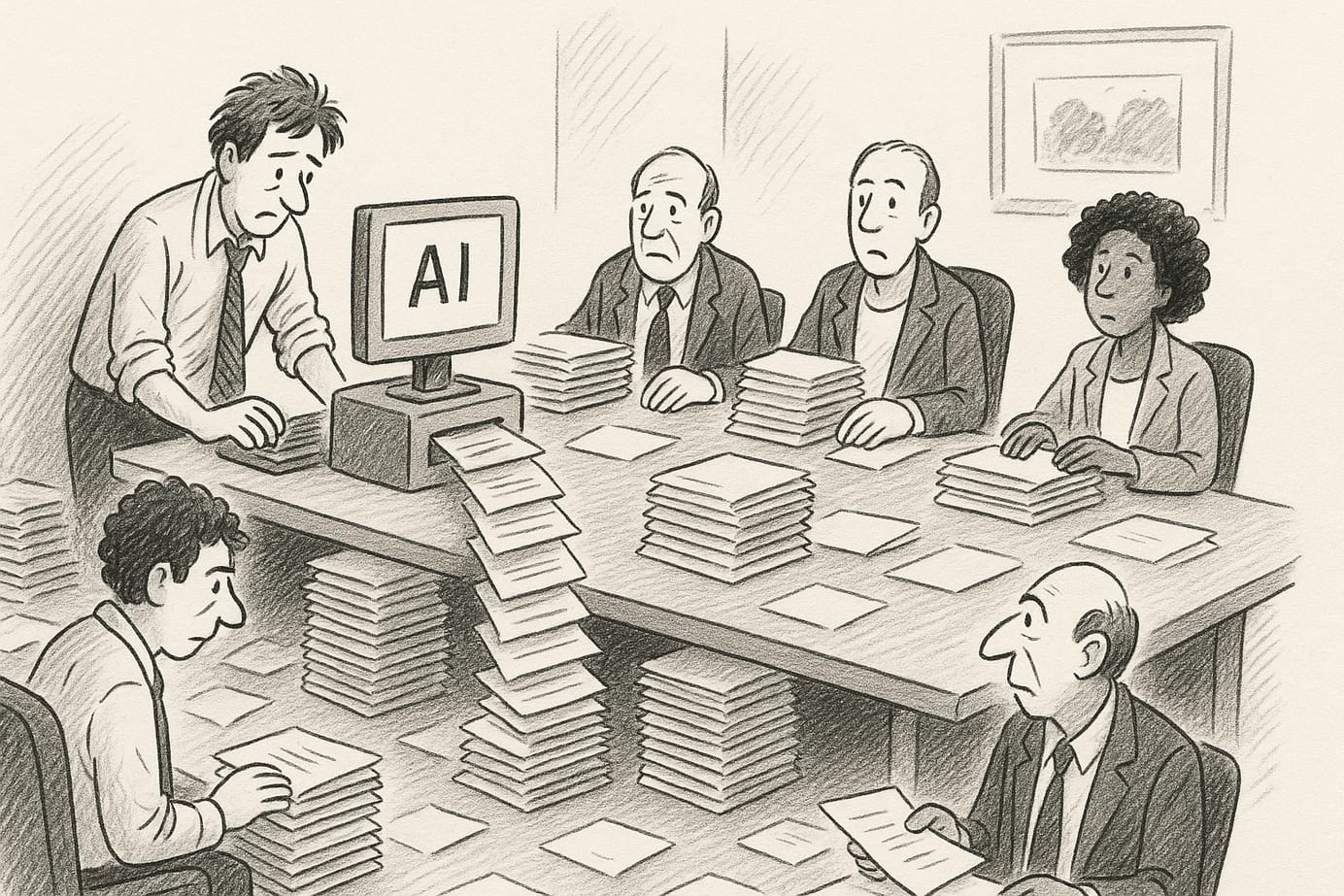
Why We Need an Industry Lens on AI Productivity
In their 1982 track Industrial Disease, rock band Dire Straits sang about the productivity decline of the British industrial sector and its socioeconomic impact. While the global economy is currently faring better, there are some important questions we should be asking when it comes to productivity. Whether on a personal, corporate, or industry level, data and AI capabilities have the potential to step change our efficiency. But are these benefits being fully realised?
There is a paradox at play: on the one hand, I have witnessed how data and AI initiatives such as predictive maintenance, demand planning, and customer segmentation can drive meaningful performance improvements across manufacturing, supply chain, and customer service respectively. On the other hand, on an industry level this positive impact is often lacking. As the Financial Times recently asked: How did customer service get so bad? Similarly, many retailers have faced supply chain challenges – data and AI notwithstanding.
So how do we resolve this paradox and unlock value at scale?
While I have touched on many of the underlying drivers before, working in professional services over the past year has convinced me that there needs to be a far greater focus on industry use cases in particular. Technology conversations – outside of R&D – should have a practical lens and tie back to well-established and well-understood pain points. Conversations need to be grounded in business value and use ROI metrics as a touchstone throughout, including in the critical evaluation of pilots, operating blueprints, and reference architectures for scaling.
While this might seem obvious, the technology industry still has some way to go. For example, when performing a Google Search, contrast the query "microsoft azure use cases" – which surfaces a rich overview of customer stories – with the search query "google cloud use cases" – which leads to a product-first technical resource, devoid of industry references or any mention of value or impact. It is worth noting that Google Cloud is not an understaffed start-up but a business that generated more than US$10 billion in revenue last quarter.

As a result, too many conversations about AI – by my estimate, over 80% – end up revolving around the technology itself, instead of the benefits it can bring. Notably, while GenAI discussions are particularly prone to this trap, I have seen similar issues with time series forecasting models and Bayesian networks. While technical details – like model selection, scaling, and security – are important, they must serve the ultimate goal of delivering business value.
Interestingly, a recent study by the RAND Corporation observed that: "by some estimates, more than 80 percent of AI projects fail — twice the rate of failure for information technology projects that do not involve AI. Thus, understanding how to translate AI's enormous potential into concrete results remains an urgent challenge." They also noted that: "in some cases, AI projects fail because the organization focuses more on using the latest and greatest technology than on solving real problems for their intended users." These are global patterns.
The shift from technical solutions to industry use cases needs to happen now.
Recently, several data teams I know have been significantly downsized amidst ROI concerns, following years and tens of millions of dollars invested. Many organisations are having these discussions, and with the scale of AI investments made in the past year it is clear questions of realised value are not yet resolved. As Dire Straits sang: Some blame the management, some the employees; Everybody knows it's the industrial disease. As businesses seek top-line growth and improved operating margins, the pressure will only continue to increase.
Helping close the data and AI productivity gap, between the present and the possible, is a significant opportunity. Working in professional services, I learned there is an important role to play for consultants in holding up a mirror to their clients. Organisations looking to set themselves up for success should identify those partners who have truly mastered industry use cases by surfacing needs, designing solutions, and scaling impact. Now is the time to move from building and hiring to driving and delivering, and capture the AI dividend.
– Ryan
Cover image by DALL·E
Q* - Qstar.ai Newsletter
Join the newsletter to receive the latest updates in your inbox.



